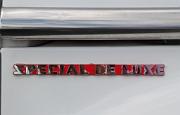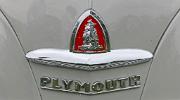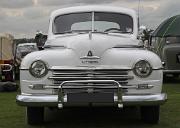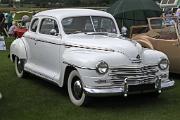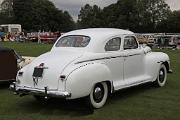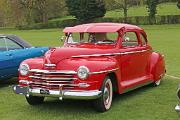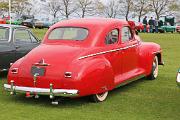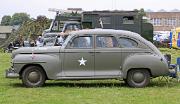
aa Plymouth P15 1948 Business Coupe badged
Plymouth P15 1948 Business Coupe - badge on bonnet side. Both Deluxe and Special Deluxe versions were offered
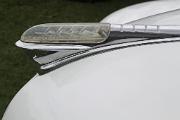
aa Plymouth P15C Coupe 1947 ornament
Plymouth P15C Special Deluxe Club Coupe 1947. Plymouth cars traditionally carried a Mayflower ornament on the top of the hood (bonnet), and by 1947 this was quite stylised and illuminated.
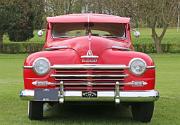
ac Plymouth P15C 1948 2-door coupe head
Plymouth P15C 1948 2-door coupe. The Plymouth P15 was powered by a 3,569cc inline six, whereas the Dodge D25 which used the same body had a 3.8-litre six
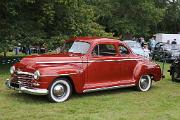
Plymouth P15 1948 Business Coupe front
Plymouth P15 1948 Business Coupe. Business Coupes were often the cheapest of a model range. The standard 3,569cc Chrysler inline six was given to the P15s
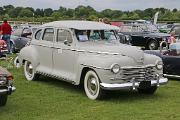
Plymouth P15C 1947 Special Deluxe 4-door sedan front
Plymouth P15C Special Deluxe 1947 4-door sedan. In 1947 Plymouth only built the P15 model, powered by a 3,569cc inline six.
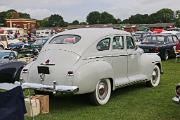
Plymouth P15C 1947 Special Deluxe 4-door sedan rear
Plymouth P15C Special Deluxe 1947 4-door sedan. Other bodies available included club coupe, business coupe, 2 and 4-door sedans, convertible and woody station wagon. A Dodge D25 was also sold which used the P15 body
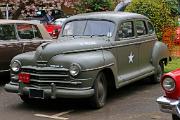
Plymouth Special Deluxe 1946 4-door Sedan front
Plymouth Special Deluxe 1946 4-door Sedan. Built on a 117-inch chassis, the Plymouth P15C was powered by a 3,569cc inline six cylinder engine.

s Plymouth P15 1948 Business Coupe side
Plymouth P15 1948 Business Coupe. Built on a 117-inch wheelbase, the Business Coupe was the cheapest model and only had a single bench seat, most of the car was given over to luggage space for the business man

s Plymouth P15C 1948 2-door coupe side
Plymouth P15C 1948 2-door coupe. Built on a 117-inch wheelbase, the P15 Special Deluxe body was also used for the Dodge D25, but that had a longer wheelbase because of its Dodge front end. The 2-door coupe has a longer cabin, for 2 rows of seats, than the cheaper Business Coupe.
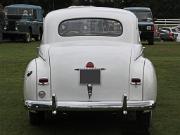
t Plymouth P15C 1947 Coupe tail
Plymouth P15C Special Deluxe Club Coupe 1947. In the 1930s Coupe models such as this often had a bootlid that opened to reveal a Dickey seat for extra (temporary) passengers. But on this model it is a simple bootlid.
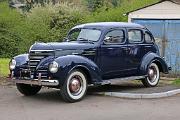
Plymouth P8 1939 4-door Sedan front
Plymouth P8 1939 4-door Sedan, with 3,299cc inline flathead six. The body was essentially a heavy restyling of the previous model, although Plymouth was now sharing sheetwork with Desoto, Dodge and Chrysler
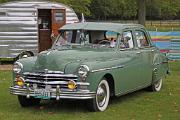
Plymouth P18 Special Deluxe 1949 sedan front
Plymouth P18 Special Deluxe 1949 sedan. In 1949 Plymouth introduced the P17 Deluxe and the longer P18 Special Deluxe, both with 217cu in L-head 6-cylinder engine. In 1949 252000 Special Deluxe Sedans were sold, but there was also a 2-door club coupe, convertible and station wagon.
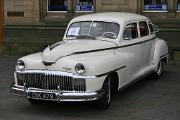
DeSoto Custom 1946 frontl
Click here to go to an album on: DeSoto 1946. DeSoto Custom 1946. The DeSoto Deluxes produced 1946 to 1948 used DeSoto's 1942 bodies, and were similar to Chrysler, Dodge and Plymouth bodies..
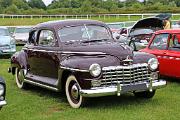
Dodge D25 Special Deluxe 1946 2-door coupe front
Click here to go to an album on: Dodge D24. Dodge Special Deluxe 1946 2-door coupe. The 'Special Deluxe' was a Canadian built Dodge. Power came from a 3.8-litre Flathead six cylinder engine
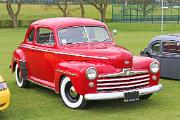
Ford Model 79A Super Deluxe 1947 2-door coupe front
Click here to go to an album on: Ford 1946/7. Ford Model 79A Super Deluxe 1947 2-door coupe. The 7GA had modest styling changes, with parking lights now going round and fitted below the headlamps.
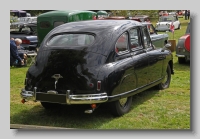
Standard Vanguard Phase I rear
Click here to go to an album on: Beetle-shaped cars. Standard Vanguard Phase I. The 'beetle-back' styling by Walter Belgrove only allowed a small boot, and the longer 3-box Phase II gave a more capacious body.


